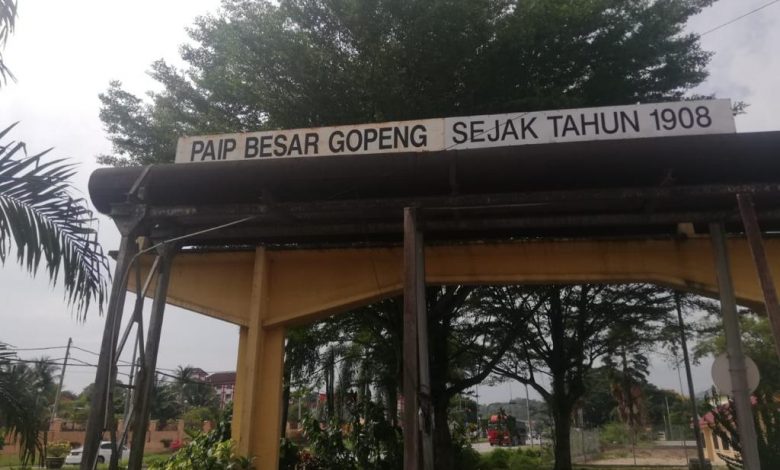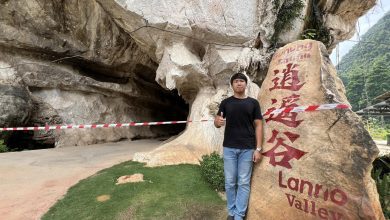

The century-old Gopeng pipeline which is an icon of the town should be gazetted under the National Heritage Act and conserved as one of the country’s historical locations.
Built in 1908, the pipeline is located next to the main road, near the federal route in the town of Gopeng.
The pipeline is synonymous with the rapid development of the tin industry in Perak and Gopeng in particular.
Speaking further on the matter, Secretary of Perak Heritage Society, Nor Hisham Zulkiflee said he felt the need to provide awareness to the authorities on the importance of the landmark.
Although signage has been set up along the pipeline in addition to information on the history of its construction, he said that it is not enough.
He stressed that it is his party’s hope that the location of the remnants of the pipeline will be recognised as a geopark.
“Why isn’t it recognised as a heritage by the Heritage Department, it’s a pity if it disappears and becomes damaged just like that without care.
“It is hoped that the pipeline will be properly conserved. Once it has been gazetted, then it cannot be neglected and so on. So there are steps to save the pipeline,” he said.
Touching a little on the history of the pipeline, he explained that the water pipes were previously used for tin mining.
He added that it was built by the Mephan-Ferguson Pipe Co. Ltd, a company from Europe.
“It was constructed by the Gopeng Tin Mining Co. Ltd in 1908, which then changed its name to Gopeng Consolidated Ltd. The mining area covered 3,543 acres.
“It was the largest tin production site in the Kinta Valley until its operation ended in 1992, following plummeting tin ore prices since 1985.
“If I’m not mistaken, the current Gopeng Post Office was originally the company’s office,” he added.
According to him, the length of the pipeline was originally 13.6 kilometres, but later increased to 15 kilometres.
“It was to connect sources of water from Ulu Geruntum and Ulu Geroh to the mining area in Gopeng.
“The construction work and transport of the iron pipes had to be done using elephants because at that time there was yet to be any suitable modern transportation,” he added.
According to Nor Hisham, the area was once included in the Gopeng heritage trail and was part of the attractions for tourists who visited there.
“In terms of the surroundings there, there is no problem because the Kampar District Council has been monitoring the area, only the condition of the pipeline is neglected and rusty,” he said.
Citing the information written on the signage there, unused pipes had been disposed of in addition to the occurrence of several cases of theft.
Once the tin mining operation had completely stopped, the remaining pipes were no longer being insured.
This situation also posed a danger to the federal road users.
Thus, the Gopeng Consolidated Ltd. appointed a contractor to demolish the pipes in 2010.
The contractor, Syarikat Global Distinction Sdn Bhd donated two units of pipes which are on display now, to the state government, each with a length of 30 metres.
The decision was made by taking into account that the pipeline is over 100 years old and played a major role in tin production as the country’s main resource in the past.


